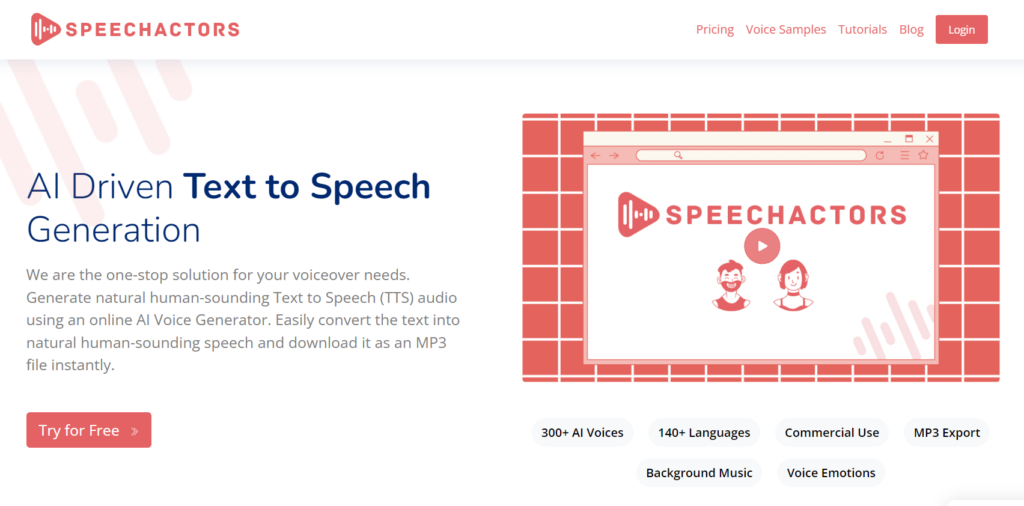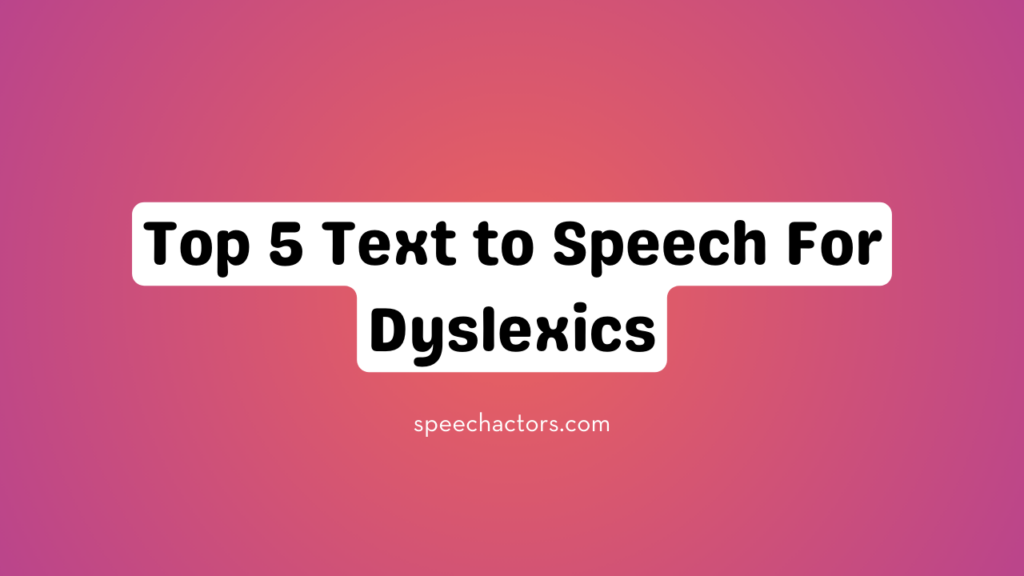Text-to-speech technology is an excellent aid for dyslexics, as it facilitates reading by turning written words into spoken language. It assists dyslexics by reading the material aloud, which makes understanding and processing information easier and more efficient.
In this post, we’ll talk about the finest text-to-speech choices for dyslexics. We’ll look at several tools and applications that can help them improve their reading and comprehension abilities, making their learning experience more accessible and pleasant.
Why Text to Speech For Dyslexics?
Text-to-Speech (TTS) tools are a big help for people with dyslexia. They read text aloud, which makes it easier to understand, especially for those who struggle with reading. TTS tools turn reading into listening, which is simpler for many dyslexics.
These tools let dyslexics learn at their own speed. They can pause, rewind, and replay the audio as needed. This way, they can learn in a way that suits them best. TTS tools also often highlight words as they’re read, which helps improve reading skills over time.
The best TTS tool for dyslexics should be easy to use and customizable. It should let users adjust the reading speed and choose different voices. This makes learning more comfortable and effective for dyslexic users.
5 Best Text to Speech For Dyslexics
1. SpeechActors

SpeechActors is a website that turns text into spoken words. It’s really helpful for people with dyslexia who find reading hard. The site uses computer voices that sound almost like real people to read out loud any written stuff.
For someone with dyslexia, listening can be easier than reading. SpeechActors makes it simple to understand texts without the struggle of decoding words on a page. It’s like having someone read to you anytime you need.
This tool is great because it lets users pick different voices, making the listening experience better and more personal. It supports learning and enjoying stories or information without getting tired from reading. This can be a big help in studying or just enjoying books.
2. Speechify
Speechify is a text-to-speech tool designed to assist individuals with dyslexia. It reads aloud text from various sources like websites, emails, and documents, making reading easier for dyslexic individuals.
The tool allows users to adjust the reading speed and choose different voices, providing a comfortable listening experience. By hearing the text, people with dyslexia can better understand and remember information, reducing the struggle associated with reading.
Overall, Speechify helps dyslexic individuals process information more effectively, making reading a more enjoyable experience.
3. Murf AI
Murf AI is a tool designed to aid individuals with dyslexia by converting written text into spoken words, facilitating comprehension. With various voices and adjustable speeds, users can select the settings that suit them best, akin to having someone read aloud.
This feature can alleviate the challenges dyslexics face when reading, making learning and comprehension less daunting. Additionally, it proves beneficial for anyone encountering difficulties with reading.
By offering accessibility and reducing stress associated with text comprehension, Murf AI serves as a valuable tool in enhancing literacy skills and overall learning experience.
4. Natural Reader
Natural Reader Natural Reader is a tool that reads out text for you. It’s really helpful for people with dyslexia. Dyslexia makes it hard to read, but hearing the words can make it easier.
This tool can read from websites, documents, and even photos of text. So, if you have trouble reading, you can just listen instead. It’s like having someone read to you.
Natural Reader is simple to use. You pick what you want it to read, and it starts reading out loud. This can help you understand better and make reading less stressful. It’s a handy tool for anyone who finds reading tough.
5. ReadSpeaker
ReadSpeaker is a text-to-speech tool beneficial for individuals with dyslexia. It transforms written text into spoken words, aiding comprehension. Dyslexic individuals often struggle with reading but find listening easier.
The tool reads text from websites, books, and documents, enabling dyslexic individuals to follow along effortlessly. It’s akin to having someone read aloud, offering significant assistance.
By utilizing ReadSpeaker, dyslexic individuals can grasp information more effectively, alleviating the stress associated with reading. This tool simplifies learning and accessing information for them.
FAQs
How does Text-to-speech help dyslexics?
TTS technology converts written text into spoken words. It’s helpful for dyslexics as it allows them to listen to text rather than struggle with reading, reducing the strain and frustration often associated with reading disorders.
Can Text-to-Speech improve reading skills in dyslexic individuals?
Yes, it can. TTS supports reading development by providing a clear model of fluent reading. It helps in understanding pronunciation and can enhance comprehension by reducing the cognitive load of decoding text.
Is Text-to-speech software easy to use for dyslexic learners?
Generally, yes. Most TTS software is user-friendly, with simple interfaces and customizable settings to adjust speech speed, voice type, and other features according to individual preferences and needs.
Does using Text to speech make dyslexics reliant on technology and hinder their reading development?
Not necessarily. TTS is a tool that assists in reading. It’s not meant to replace traditional reading methods but rather to complement them, allowing dyslexic individuals to access information more easily while they continue to develop their reading skills.
Final Words
Text-to-speech (TTS) programs are extremely beneficial to dyslexics. They make reading simpler by reading it aloud. This aids understanding and following along.
Top TTS solutions, such as SpeechActors, provide many functionalities. They cater to a variety of requirements and tastes. In short, these tools are useful, user-friendly, and assist dyslexics in their reading journey.
